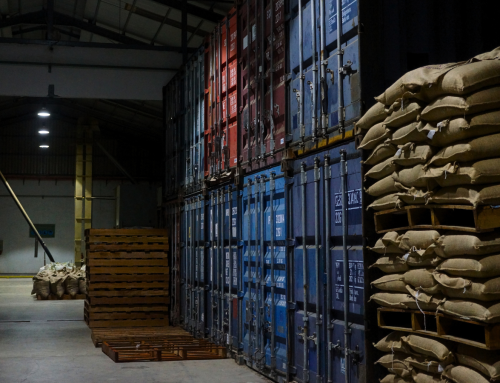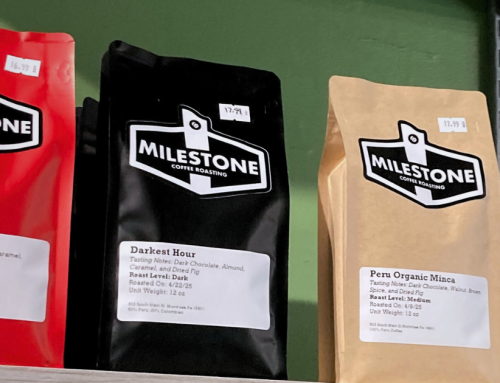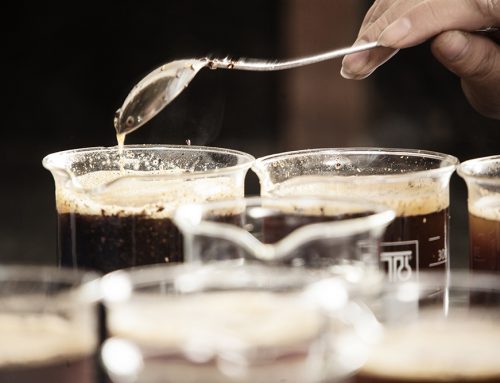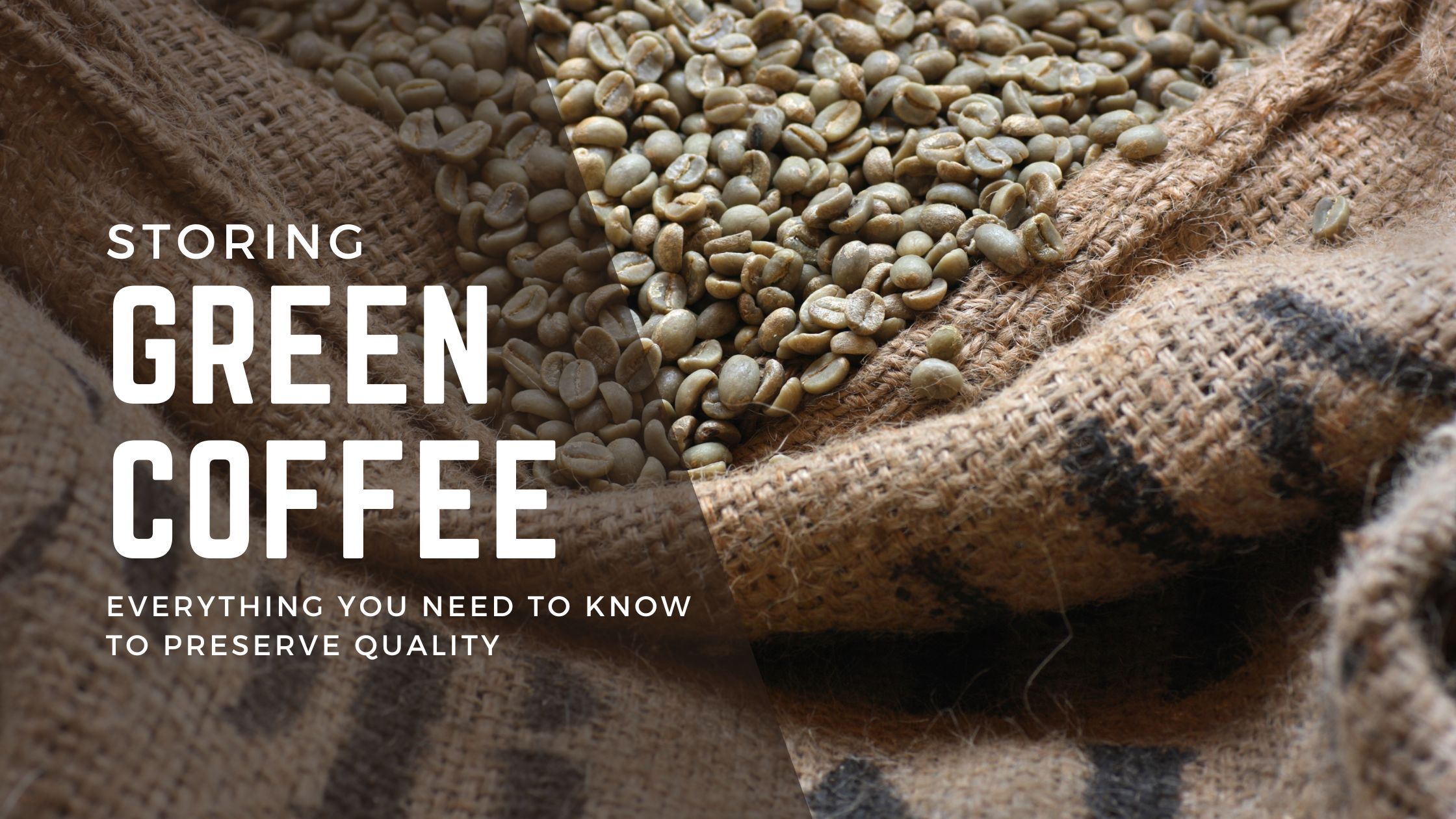
Image by Rolbos | Getty Images Signature
When green coffee beans are sourced from a reliable importer, it’s safe to assume that they treated and transported the coffee with care, from farm to destination. After that, however, it’s up to the coffee roaster to carry on the mantle of keeping the quality of the unroasted coffee as high as possible until roasted. Sometimes you might have unroasted coffee in your coffee roastery for weeks or months. This means you need to consider how to store your green coffee beans in the proper conditions until they’re ready to be roasted.
Finding or building the right storage conditions for your green coffee beans may be difficult. It may take a lot of money to build a climate-controlled environment that is separate from light and strong odors. If you’re like most roasters, you don’t have unlimited resources, so you want to do as much as you can to preserve quality.
Green Coffee Bean Storage Overview
If you don’t have time to read through the article, here are the quick facts on storing green coffee beans:
- Close or reseal the food-grade liners and GO green bag between roasts
- Store your green coffee beans in a cool, dry place away from direct sunlight and heat
- Keep your bags and boxes of unroasted coffee off the ground. Store boxes & bags on racks, shelves or pallets
- Keep raw coffee away from strong odors
- Store green coffee beans away areas with high humidity and avoid getting it wet
Now, down to business. There are a few vital factors coffee roasters need to consider when thinking about storing green coffee beans: packaging, temperature, moisture, light, containers, and time.
Does Packaging Matter
Simply put, definitely! Conventionally packed coffee in jute bags can be exposed to extreme moisture, light, heat and environments at origin, at sea, at port, in coffee warehouses and your roastery. Traditional coffee packaging leaves a lot of opportunities for quality degradation. In order to mitigate these risks, we do things differently.
Every box of Genuine Origin green coffee bean comes encased in a food-grade bag such as GrainPro, Ecotact or our proprietary food-grade packs. The GO green polypropylene bags are strong, weather-resistant, and feature a bag-in-bag technology that secures the green coffee beans in a food-grade lining. Even our green coffee samples are stored in standardized food-grade bags (as opposed to plastic sandwich bags or brown paper bags).
Boxes of GO green coffee beans come delivered in neat, 65lb GO boxes that are stackable and easy to carry. We include registered and unbroken seals on both bag and box, so you know the coffee you’re getting is the coffee you ordered. But what happens when you start opening boxes and split open the seals?
If you don’t do anything else, simply closing the GO green bag and liner between roasts will do a lot for preserving quality.
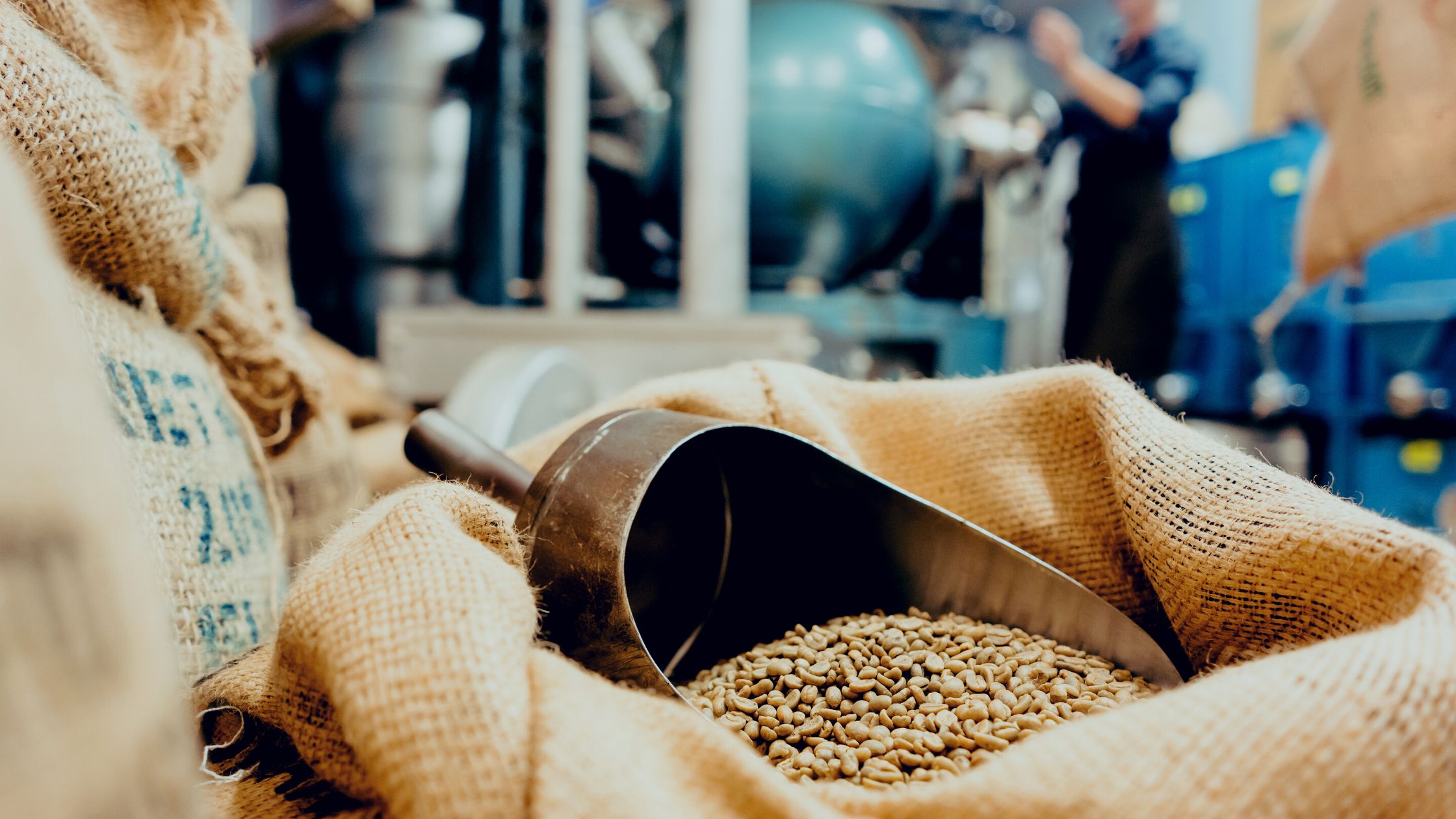
Open bags of green coffee beans stored in a roastery | Img Kzenon
How Long Can Green Coffee Bean Be Stored?
Green coffee beans can stay fresh (in the proper storage conditions) for about 12 months. This time can be extended even longer with airtight or multi-layer packaging. However, keep in mind that the coffee wasn’t harvested and processed the day before it arrived in your hands. So, raw coffee may be a few months old when it is shipped, depending on where it originated. Of course, you can always refer to a harvest calendar by origin to better understand how old your green coffee might be when you receive it.
What is the Ideal Temperature for Storing Green Coffee?
Temperature management is one good way to get humidity under control, and while maintaining a stable temperature is critical, some climates are better than others for storing specialty green coffee.
Hotter temperatures retain more water molecules in the air, while lower temperatures lead to less moisture. That’s why most experts recommend keeping green coffee at room temperature, where it’s not too hot or too cold (68-77ºF or 20-25ºC). (Side note: Sealed airtight packaging helps protect green coffee from temperatures in a much wider range.)
What is the Ideal Moisture for Storing Green Coffee Beans?
When green coffee reaches a roaster, it’s usually at a moisture content of around 11%. This percentage can change if the beans are sitting in a warehouse that’s too humid or too dry. If the coffee beans get too wet, they can get moldy. Conversely, if the environment is too dry, the beans may begin to lose flavor.
Producers have used jute or burlap bags to transport green coffee for decades, and their permeable material makes it easy for airflow (and therefore moisture) to get into the coffee. At the same time, using single-layer plastic bags as an alternative also puts the coffee at risk of condensation building up inside.
Regardless of the packing method, moisture levels are a critical concern that can easily affect the quality of green coffee. According to the International Coffee Organization, storage facilities should maintain a stable humidity level of around 11-12.5%. Stacking green coffee on pallets also prevents them from absorbing any moisture from concrete floors.
Will Light Degrade My Unroasted Coffee?
Another way to prevent moisture levels from getting out of hand (seeing a pattern here?) is controlling how much light gets into the storage facility. Simply put, the coffee has already been dried out enough at origin, often under direct sunlight, and doesn’t need any more once it arrives at the roastery. Store green coffee beans out of direct sunlight. This will help to avoid loss of flavor and aroma.
Scooping green coffee beans from GrainPro | Img AvatarKnowmad Getty Images
Alternative Containers for Green Coffee Bean Storage
We mentioned above how Genuine Origin seals and packages its unroasted coffee in double-layered bags, but how can roasters store an opened bag of green coffee as they roast the beans over time? As mentioned above, you can simply close up the GO green bags and liner to preserve the longevity of the coffee. If you’re considering alternative green coffee storage bins options, here are a few container concepts for keeping your green coffee beans fresh:
- Airtight containers – These function similarly to valved bags to stop air from reaching the coffee but may be easier to stack and store depending on your storage facility’s layout. Just be certain that it has an airtight seal.
- Vacuum-sealed containers – If you’re concerned about any moisture getting into your green coffee from the moment you open the original sealed bag, you can use a vacuum-sealed container to remove any excess air from inside.
- Airscape® containers – These patented containers take airtight to the next level. The Airscape® lid acts as a plunger, pressing out any air in the empty space (kind of like an Aeropress), and a separate top lid provides an extra layer of protection.
(Important note: Any container you choose should ideally be opaque to keep out light at the same time.)
Summing it All Up
In summary, store your green coffee beans in a cool, dark, odor-free place and definitely close up your bags between roasts. One other option is to let Genuine Origin take care of the storage.
You can avoid storage problems by ordering only what you need. With Genuine Origin, you can place orders online and set the shipment dates up to 90 days later, so you’re not stuck with green coffee sitting around at your roastery but still have your favorite unroasted coffees securely booked. While you wait, your coffee will be stored in our food-grade warehouses with no additional fees, and you won’t pay for your order until it ships (unless you’re using PayPal).
Ready to get roasting? Check out Genuine Origin’s specialty green coffee beans on our website today.



